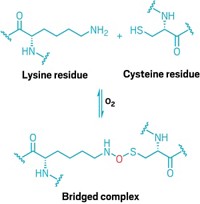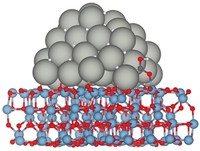Advertisement
Grab your lab coat. Let's get started
Welcome!
Welcome!
Create an account below to get 6 C&EN articles per month, receive newsletters and more - all free.
It seems this is your first time logging in online. Please enter the following information to continue.
As an ACS member you automatically get access to this site. All we need is few more details to create your reading experience.
Not you? Sign in with a different account.
Not you? Sign in with a different account.
ERROR 1
ERROR 1
ERROR 2
ERROR 2
ERROR 2
ERROR 2
ERROR 2
Password and Confirm password must match.
If you have an ACS member number, please enter it here so we can link this account to your membership. (optional)
ERROR 2
ACS values your privacy. By submitting your information, you are gaining access to C&EN and subscribing to our weekly newsletter. We use the information you provide to make your reading experience better, and we will never sell your data to third party members.
Synthesis
Methane-To-Methanol Converter’s Diamond Core Clarified
Active intermediate of soluble methane monooxygenase has a diamond-shaped core
by Jyllian Kemsley
January 26, 2015
| A version of this story appeared in
Volume 93, Issue 4
The catalytic intermediate of an enzyme that microbes use to convert methane to methanol has a diiron site bridged by two oxygen atoms that originate from O2, report Rahul Banerjee and John D. Lipscomb of the University of Minnesota, Twin Cities, and Yegor Proshlyakov and Denis A. Proshlyakov of Michigan State University (Nature 2015, DOI: 10.1038/nature14160). The structure of the soluble methane monooxygenase intermediate, known as compound Q, has long been debated. A better understanding of Q and how it does its chemistry could point researchers toward more efficient ways of converting waste methane into a liquid fuel and chemical feedstock. The two popular candidates for Q’s structure have been the doubly bridged “diamond core” and an “open core,” with one bridging oxygen and one terminal oxygen (Fe4+=O). In the new work, Banerjee and colleagues used a continuous-flow system to collect resonance Raman spectra of Q formed through reactions of the enzyme with 16O2, 18O2, and 16O18O. The results indicate that Q has a diamond core formed from homolytic cleavage of O2 to provide the bridging ligands. Monitoring the reaction further, the researchers determined that a subsequent species, T, retains a single oxygen as a bridge while the other oxygen is transferred to methanol.





Join the conversation
Contact the reporter
Submit a Letter to the Editor for publication
Engage with us on Twitter